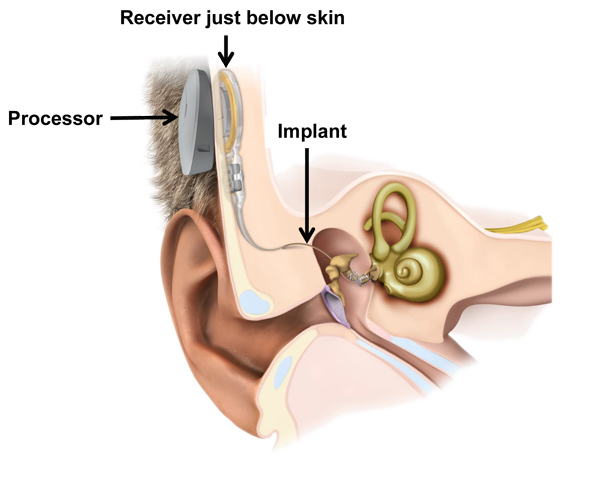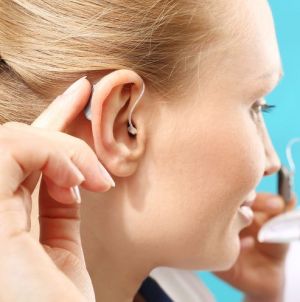 |
| Source - Hearing Link |
• In 1953, Wilska placed iron particles directly on the tympanic membrane in order to stimulate(vibrate) the ossicles by means of creating a magnetic field, which caused the iron fillings to vibrating in synchrony with the magnetic field.
• In 1959, Rutschmann fixed 10mg magnets to the malleus umbo, causing it to vibrate by applying a modified magnetic field with an electromagnetic coil. The resulting vibration of the ossicles produced a hearing sensation.
• In 1973, Frederickson et al first mechanical implant. A magnet was attached to the head of the stapes(on monkey) then an adjacent copper wire created an electromagnetic induction and vibrated the magnet, inducing a signal into the hearing system.
• In 1984, Yanagihara RION is a partially implantable middle ear device that uses a piezoelectric transducer approach. The device consists of a microphone, speech processor, battery that is contained in an external behind the ear unit. The internal component consists of an ossicular vibrator and an internal coil, which are coupled. The essential component is the vibratory element consisting of a bimorph, or two piezoelectric ceramic elements pasted together with opposite polarity, which has been coated with a layer of biocompatible material.
•
 |
| Source - Healthy Hearing |
In 1987, Based on the principle of osseointegration, the bone -anchored hearing aid was fixed. It has evolved from a percutaneous device to a transcutaneous bone conduction device.
• In 1988, Heide et al proposed an alternative to the piezoelectric transducer an electromagnetic system consist of a small magnet glued onto the eardrum at the level of the malleus. The microphone, battery, electronics and the driving coil were placed in a special housing and inserted in the ear canal.
• In 1995, Maniglia et al in this device there was no gap between the magnet and the coil and was attached to the incus by means of a connecting rod. The transducer is placed in the mastoid cavity, while the tip of the moving rod was placed in a small hole, made with the laser, in the body of the incus. The transducer was placed nested electrically to a subcutaneously placed receiving coil. Due to the absence of the air gap, this device was more powerful than the earlier electromagnetic devices
• In 1995, Fredrickson et al a fully implantable version of the otologists MET was released.
• In 1996, Ball developed the vibrant sound bridge(VSB). Initially developed by siemens company to be produced in series (symphonic sound bridge) out of business in 2002. Later, in march 2003 med EL company included the system in their product range.
• In 1998, Leysieffer and Zenner first fully implantable hearing system TICALZ, 3001.
• In 2001, Hough et al he improved the version of Heide’s electromagnetic device. The electromagnetic coil and processor were integrated into behind the ear or in the ear canal device which occluded the ear canal. Envoy Medical Corporation developed a totally implanted piezoelectric device named the envoy system.
Reference: Mankekar, G. (2014) Implantable Hearing devices other than cochlear
implants. Springer India.
Written By - Violet Priscilla S
Edited By - Anamika Malik









5 Comments
Good
ReplyDeleteWas useful to read
ReplyDeletesuper
ReplyDeleteCame to know more
ReplyDelete👌
ReplyDelete